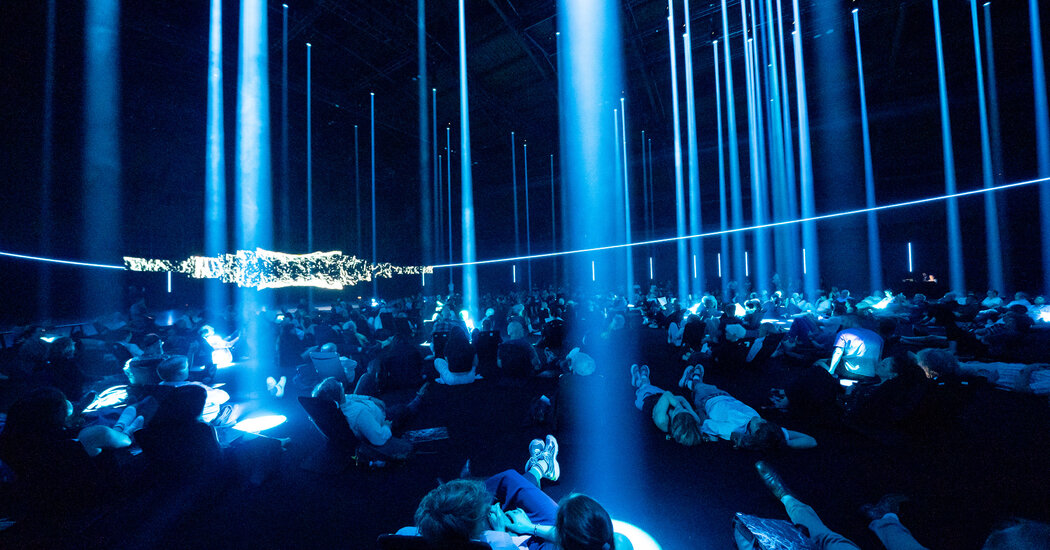Some of the video at the Armory conjures ocean waves; a set of lights on one side occasionally shines down brightly, like a sun or full moon. That, though, is about as much recognizable imagery as there is in “Inside Light.” The visuals steer away from kitsch or gratuitous weirdness; this is, however improbably, a coolly stylish Stockhausen, shorn of much of his bizarrerie.
That sacrifices a lot. But what it leaves — what makes “Inside Light” special — is the opportunity to hear this music arranged so sensitively and stimulatingly, on such a complex yet clear array of speakers set up around the audience. (Spatialized music has become an Armory subspecialty: It has presented Stockhausen’s “Oktophonie” and “Gruppen,” and works by Boulez and Kaija Saariaho.)
Contrast the sophisticated sound work being done here by Kathinka Pasveer, a longtime Stockhausen collaborator, and Reinhard Klose with the murky, gimmicky multichannel audio of the Sonic Sphere (based on a Stockhausen prototype) at the Shed last year. In “Unsichtbare Chöre,” male voices were audible off to one side of where I was sitting, with women behind somewhere in the distance. In “Freitags-Abschied,” just a second or two of tinkling way off to my left transformed music-making into world-building.
Stockhausen sometimes placed his music in total darkness, and, with all due respect to the designers, closing your eyes barely limits the experience at the Armory. Yet not looking would prevent taking in a climactic vision.
“Freitags-Abschied” slowly ends as a man’s speaking voice intones “dreizehn,” or “13,” over and over, a super-elongated incantation or mantra. A high, soft drone seems to move around the space. (A bit of musical hope flickering in the darkness?) The final image accompanying all this is a square of white LEDs beaming down a ghostly tower, with the slight separation between the lights creating distinctive vertical striations on the tower’s “facade.”
It was hard, for me at least, not to think of the World Trade Center, especially since Stockhausen and “Licht” were ensnared in controversy around the Sept. 11 attacks. Asked by a journalist a few days after the attacks about his opera’s characters, he said that Lucifer — for him the cosmic force in opposition to creation and love — “is very much present, like in New York recently,” and added that the attacks were “the greatest work of art that is possible in the whole cosmos.”
